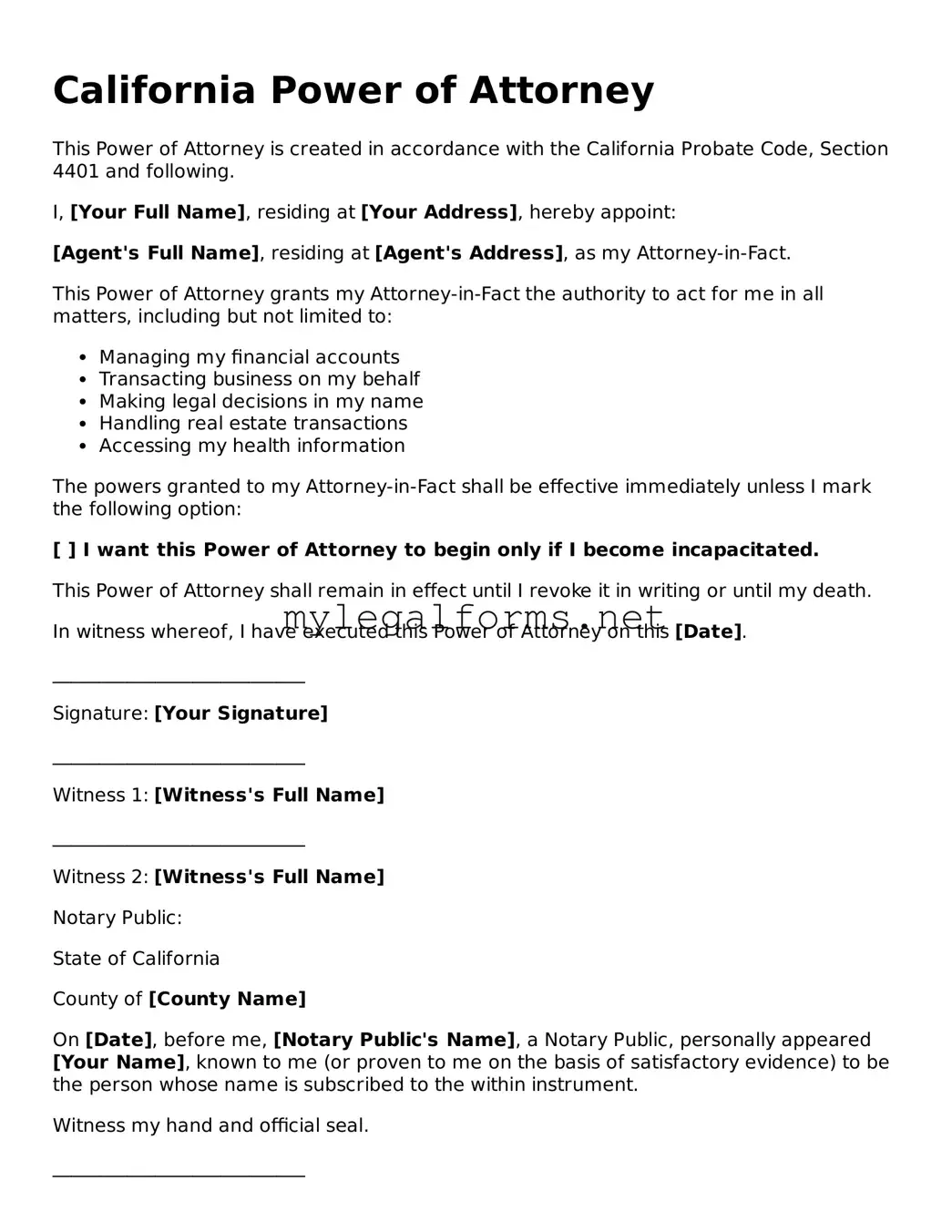California Power of Attorney
This Power of Attorney is created in accordance with the California Probate Code, Section 4401 and following.
I, [Your Full Name], residing at [Your Address], hereby appoint:
[Agent's Full Name], residing at [Agent's Address], as my Attorney-in-Fact.
This Power of Attorney grants my Attorney-in-Fact the authority to act for me in all matters, including but not limited to:
- Managing my financial accounts
- Transacting business on my behalf
- Making legal decisions in my name
- Handling real estate transactions
- Accessing my health information
The powers granted to my Attorney-in-Fact shall be effective immediately unless I mark the following option:
[ ] I want this Power of Attorney to begin only if I become incapacitated.
This Power of Attorney shall remain in effect until I revoke it in writing or until my death.
In witness whereof, I have executed this Power of Attorney on this [Date].
___________________________
Signature: [Your Signature]
___________________________
Witness 1: [Witness's Full Name]
___________________________
Witness 2: [Witness's Full Name]
Notary Public:
State of California
County of [County Name]
On [Date], before me, [Notary Public's Name], a Notary Public, personally appeared [Your Name], known to me (or proven to me on the basis of satisfactory evidence) to be the person whose name is subscribed to the within instrument.
Witness my hand and official seal.
___________________________
Notary Signature: [Notary Signature]
My Commission Expires: [Expiration Date]
